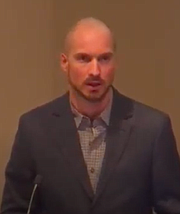Water worries? Not in Post Falls
POST FALLS — Despite requests to limit household water use from noon to 6 p.m., public works director John Beacham reports that all of Post Falls water systems are operating swimmingly.
At last week's City Council meeting, Mayor Ron Jacobson said recent public comments implied that the district’s water systems were breaking down.
“That simply isn’t true,” Jacobson said.
Most of Post Falls residential use water is supplied by three main companies along with numerous smaller water systems within city limits.
Beacham reported that there have been no struggles for any of them to keep up with usage this summer, which is on track to be the hottest dating back to at least the 1890s.
“The city does not operate all the water for Post Falls,” Beacham said. “I think that’s a pretty common misconception.”
The city of Post Falls Water District provides about 50% of the city's domestic water use.
The East Greenacres Irrigation District and the Ross Point Water District provide for a large portion of the rest.
Foremost in the thoughts of many Post Falls citizens is the question of whether the city’s water supply will meet the demands of new growth. During the heat wave in July, there was speculation of system failures.
“I reached out to both Ross Point Irrigation District and East Greenacres and my first question was what, if any issues have you been having especially in relation to the heat wave in July?” Beacham said.
“Both of them answered that there were no issues to speak of.”
The city of Post Falls Water District was operating at 71% capacity during the heat wave, Beacham said.
“That was a pretty comfortable place for us to be operating,” he said.
In compliance with the city’s Master Plan, construction has been completed on two new wells this summer.
“We do have plans to complete another additional well next summer,” Beacham said.
The city has had a water conservation ordinance in place since 2003 that restricts water use during the hours of noon to 6 p.m.
“We think it is good stewardship of water,” Beacham said. “It helps keep the demand low. The lower we keep the peak demand the less investment we have and it actually keeps the water rates low.”
The city’s water district operates about 115 miles of water lines and sources water from eight wells that draw from the Rathdrum Prairie Aquifer.
The city is capable of producing over 23 million gallons of water per day and maintains 5.55 million gallons of storage capacity in case of a water emergency.
The city of Post Falls considers the water supply to be adequate through 2030.
The Ross Point Water District, established in 1946, is operating four of its five wells.
RPWD maintains a storage facility of 2,500 gallons and provides water to the area between Syringa Road to the west, Hayden Avenue to the north, Huetter Road to the east and Mullan Avenue to the south.
It maintains a 300 horsepower well that's available in case of emergency and is in the process of building two new wells this summer.
The company asks that residents limit watering from noon to 6 p.m. daily because that's when most water is lost to evaporation.
Ross Point representatives said that if the peak demand for water continues to increase, in the future, a request may become a mandate.
First established in 1921, the East Greenacres Irrigation District serves about 9,800 residents.
Operating 14 wells in three well fields, EGID can provide 57 million gallons of water per day.
Representatives from EGID report that keeping up with water usage demand has been easy for them.
The necessary infrastructure to support heavy water use was built out a long time ago with agricultural use in mind.
“Their peak water demand this year was in late July, not in early July when we had that fourth of July heat wave,” Beacham said. That fact reflects the agricultural water use.
EGID anticipates having no problem with demand in the future. As land use in Post Falls changes from farming to more residential, the water needed will actually decrease.
EGID maintains a storage facility of 325,000 gallons.
The continued provision of all of the city’s water usage depends on the health of the Rathdrum Prairie Aquifer.
Beacham said water levels within the aquifer are tracked regularly by the Idaho Department of Water Resources.
Those levels fluctuate over time.
“It’s been higher than it is today, it’s been lower than it is today,” Beacham said.
The Rathdrum Prairie Aquifer is unusual in that it's re-charged on “a decade or less basis” and mostly depends on surface water filtering down into the aquifer.
Five inter-ties exist between the city, RPWD and EGID in case there's a water emergency.
Info: postfallsidaho.org, under online payments and documents: Comprehensive Plan 2020, Water System Master Plan 2018



